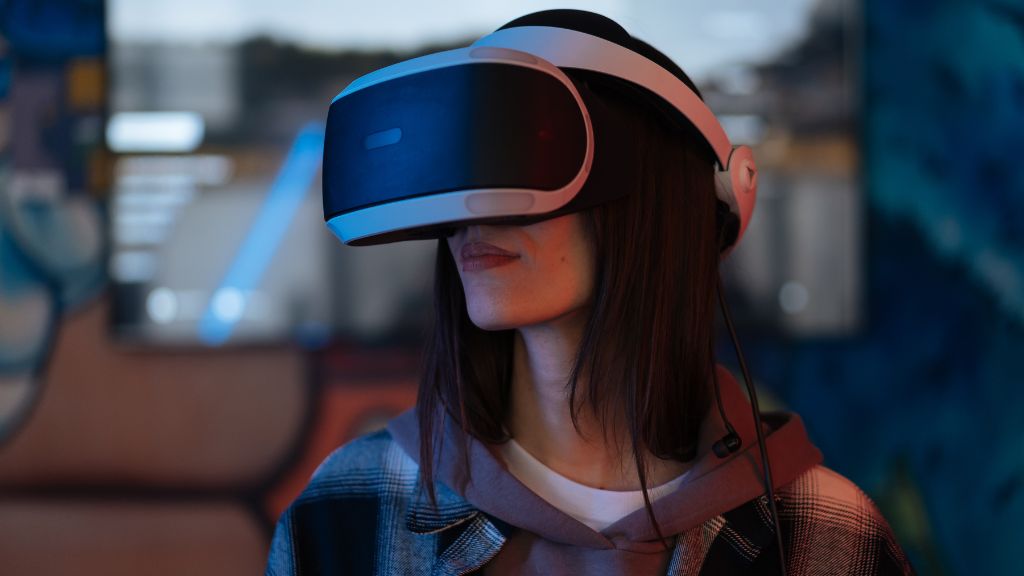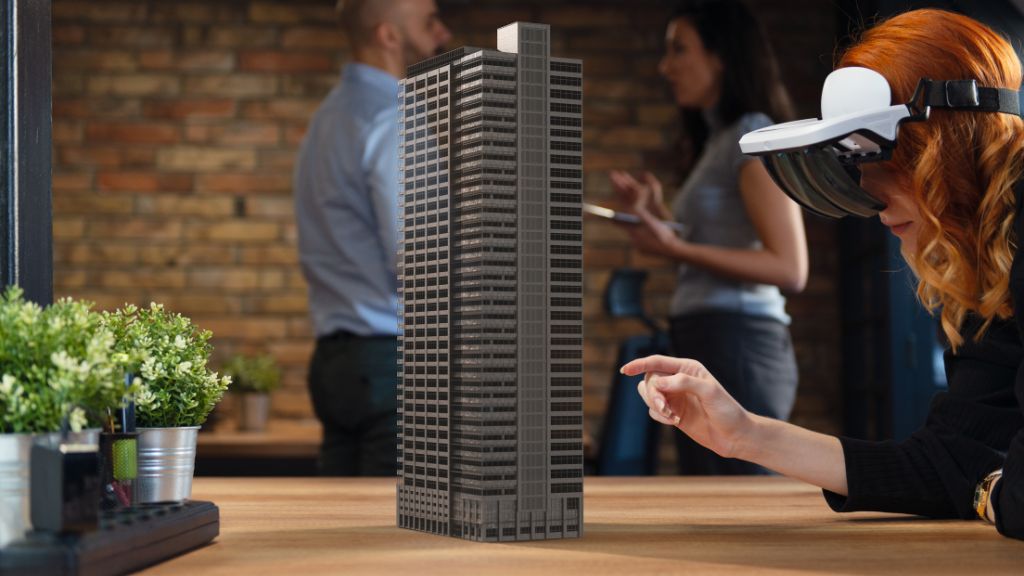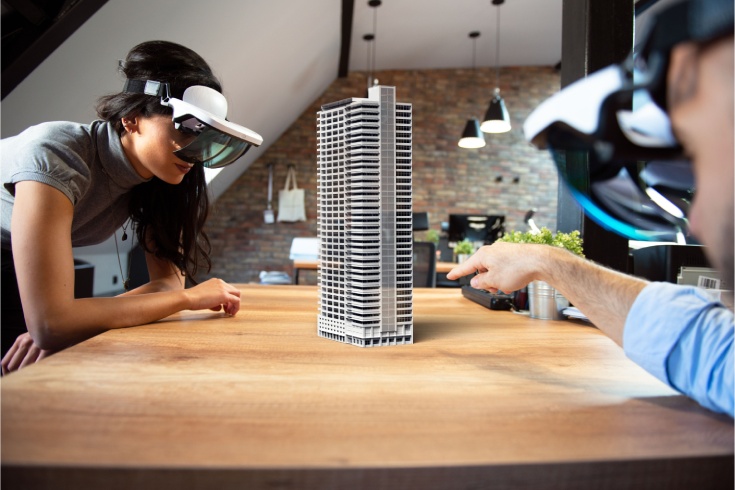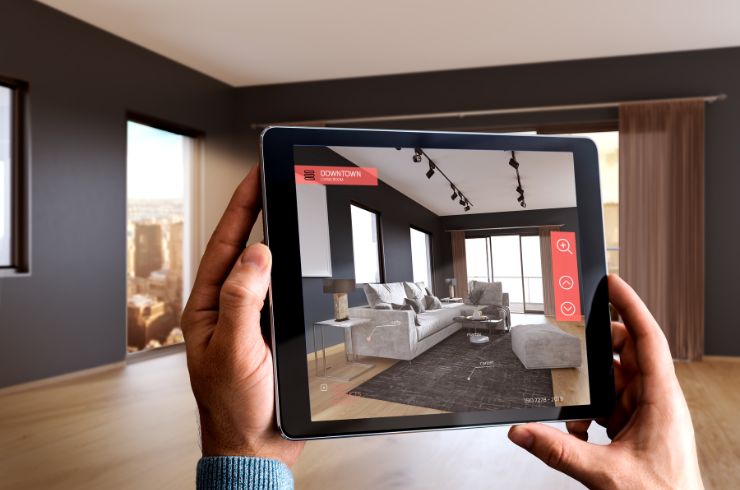Augmented Reality (AR) and Virtual Reality (VR) are both technologies that encompass different applications but allow users to interact with digital content in an environment they could not otherwise access or experience.
As forecasted for 2023, VR and AR users are estimated to reach over 110 million users in the United States. Indeed, an overwhelming figure.
Yet, what are AR and VR and what is the difference between AR vs. VR? Some use AR and VR interchangeably due to their similar elements and applications.
This article will detail the showdown of AR vs. VR, their advantages and disadvantages, and their applications.
What Is Augmented Reality (AR)?
AR is a technology that takes what we see in the real world and superimposes digital content (images, video, sounds, etc.) onto it in real-time. The purpose of AR is to use the physical world as a canvas and overlay computer-generated elements on top of it.
This technology is currently used for various purposes like gaming, entertainment, education, and other fields. AR allows users to interact with real-world objects in a way that does not necessarily require a headset or goggles, operating on mobile devices or wearable technologies like Microsoft’s Hololens 2 or Lenovo ThinkReality A3.
For example, AR can help with navigation by providing visible directions through a device screen. So, there is no need to glue one’s eyes to a map while walking around and exploring new cities and sites.
What Is Virtual Reality (VR)?
VR is a digital simulation of a 3D environment that can be interacted with and viewed with a VR headset. VR is the next generation of how people experience the online world since it allows them to immerse themselves in a virtual environment.

VR immerses the user in a virtual environment to explore 3D worlds from the user’s perspective, engage with VR apps, watch movies on a virtual screen, and many more. VR is used on a PC or laptop with VR-dedicated software, but powerful gaming hardware is needed to operate VR headsets.
Since VR first gained traction in the gaming and entertainment industries, VR headsets are currently available for platforms such as PlayStation 4 and Xbox One consoles. For the past decade, however, VR applications have expanded to other areas or fields, such as staff training.
AR vs. VR: What’s the Difference
The two technologies carry different functions, creating distinct experiences for users. So, what is the difference between virtual reality and augmented reality?
- Objective: VR is a computer-generated replica of a three-dimensional environment; the user wears a headset and is immersed in the virtual world, while AR directly overlays digital, visible, and interactive information onto the physical world.
- Immersion: VR provides an immersive and interactive experience that some users find overly realistic, while AR provides information, such as directions or guidance, without a completely immersive experience for the user.
- Experience: In contrast to AR, which can be viewed by everyone around since it layers digital data onto the user’s current environment, VR is a purely subjective experience as it requires wearing goggles or a headset to cut off the user from their immediate surroundings.
- Motion Tracking: Another difference between AR and VR is motion tracking. Whereas VR motion tracking sensors are installed on the user’s body, AR relies on the device’s input, such as environment position or orientation.
- Bandwidth: VR devices are generally tethered to computers and require a large amount of bandwidth to generate graphics. AR devices are mobile and need comparatively less bandwidth for graphics generation.
Advantages and Disadvantages of Augmented Reality
There are numerous opportunities for AR applications, such as in education, including virtual visits to museums; classroom instruction that requires students to use their imagination; lessons that offer hands-on activities; and multimedia experiences such as tutorials and interactive games.
Since AR-presented information is accessed in various ways via wearable devices (e.g., Google Glass), smartphones or tablets, it is more accessible and development-prone. As estimated by Statista, 1.7 billion AR user devices will take over the world by storm by 2024.

However, AR brings new challenges regarding data security since AR-based applications require permission to access a user’s phone camera, sensors, location, etc.
This might pose privacy concerns as a similar study published on ScienceDirect, a publishing portal for scientific and medical research papers, concluded after examining privacy issues in AR-based applications.
Lastly, extensive and excessive use of AR-based applications may result in health risks such as eye strain, fatigue, and dizziness which can adversely impact an individual’s life.
Advantages and Disadvantages of Virtual Reality
As more people opt to use virtual reality to experience an event or even as a form of entertainment, the advantages of VR technology will continue to grow. VR allows users to indulge in experiences they cannot undergo in real life, such as flying, underwater dives, travelogue views of different places, and more.
VR has even made its way into healthcare, from improving surgical procedures to training nurses on managing certain medical conditions. Doctors are even using VR instead of traditional physical therapy exercises as a refreshing option.
However, the major disadvantage of VR may be that it is still radically new. Long-term implications are still unknown, and with increased reliance on this technology, these implications could become more significant.
For instance, VR training cannot replace actual training, despite the reduced risks and vast benefits, especially in high-risk or meticulous professions.
In addition, VR costs can be high, and its applications are limited. Only some have the hardware for VR, and those who do, cannot use it to its full potential due to high latency between what is seen on the screen and the corresponding information picked up by the headset.
Applications of Augmented Reality
AR has been extensively used in various sectors, including education, training, marketing, and architecture. It is also evident how many companies have already utilized AR to boost work efficiency and better meet customers’ demands through better quality service delivery or product offerings.
Here are some innovative AR-based applications:
- Apple Measure: An IOS mobile application that automatically measures objects or distances.
- IKEA Place: An IOS mobile application for virtually furnishing a house before buying any furniture to see what it might look like in real life.
- AUGmentecture: An AR tool for architects that creates a 3D-modeled virtual visualization of a project on a tablet device.
Applications of Virtual Reality
VR has been revolutionizing the way we experience the world. From simply viewing something to experiencing it, VR is an exciting new technology. VR applications are endless, including gaming, education, healthcare, and entertainment experiences such as movies and concerts.
There are also more practical applications, such as manufacturing training programs and architectural walkthroughs.

Here are some exciting VR-based applications:
- Samsung 837X: A fully immersive retail experience that has been making headlines worldwide. It is a three-story, 11,000-square-foot shop in New York City, offering interactive digital experiences and services.
- Etsy Virtual House: A virtual reality experience developed by Etsy that allows buyers to walk through a virtual house and view items available for sale by numerous artists.
- Space Explorers (The ISS Experience): The ISS Experience is an Oculus-powered production that gives people a taste of what it would be like to explore deep space.
What Is Mixed Reality (MR)?
MR is a term used to describe different technologies that interact with the user in the real world, as opposed to those on a screen. MR allows people to interact with live environments and objects through the use of various forms of multimedia, such as holograms, 3D images, and sounds.
One could compare MR to VR, but MR is more about reconstructing the physical world than creating an imaginary one.
MR combines VR and AR, hence mixed reality. Rather than being immersed in purely made-up images, users see their physical environment and the interactive digital content through their device’s screen or while wearing special glasses. Unlike VR, MR is not a true virtual reality as it does not completely block out the user’s surroundings or environment.
Role of Virtual Reality and Augmented Reality in the Metaverse
The Metaverse envisioned a world where VR and AR merge to create the ultimate immersive virtual experience. It is no longer AR vs. VR, but a joint immersive world, a simulated environment created with software, such as 3D modeling tools and VR headsets.
Due to the headsets’ built-in eye-tracking feature, these environments are interactive, meaning that users can manipulate objects using their hands and eye movement. In the Metaverse, you can experience a digital environment (VR) with a real-time digital overlay of information (AR) when logging in from a VR headset.
Other big giants in the tech industry, such as Google and Microsoft, have been trying to delve into similar projects since Meta launched the Metaverse. Other companies have also been keen to follow the steps of the tech giant. For instance, Decentraland Foundation developed Decentraland (MANA), a type of Metaverse for crypto-enthusiast gamers.
Conclusion
AR and VR have gained notable recognition and proved to be two of the most powerful technologies in recent years. As AR and VR have been developing in significant strides over the past decades with applications expanding at an incredible rate, they are no longer a novelty but an industry in their own right.




